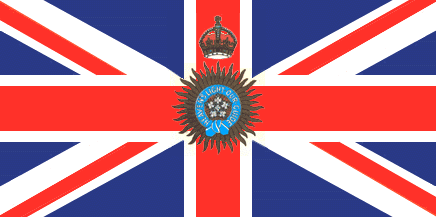

The flag of Indian Empire from 1879 to 1946. This flag fluttered atop Fort William in Calcutta and many other public buildings but was seen as a symbol of oppression by nationalists who were to eventually lead India to freedom from European rule.
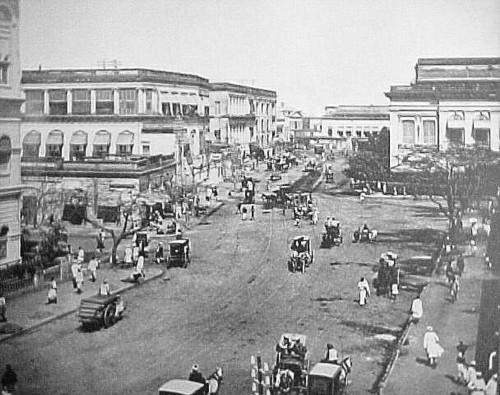
Clive Street, 1890 (photograph, courtesy Bourne & Shepherd). To the north of the old Fort William, Clive Street became the mercantile hub of the greatest city in Asia at the time. Headquarters for the stock exchange, banks, shipping lines and merchant and engineering firms Clive Street was the citadel of laissez faire in the East. Today, renamed Netaji Subhas Road, Clive Street is the address for the most business conglomerates in Calcutta.
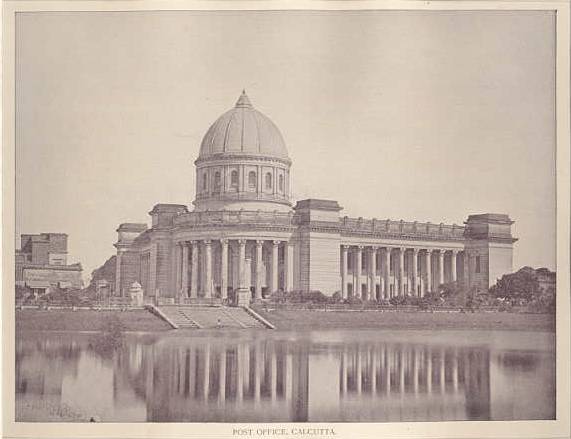
The Imperial General Post Office, 1890 (picture postcard). Built on the site of the old Fort William, the General Post Office, as it is known today is an imposing edifice on the face of Calcutta.
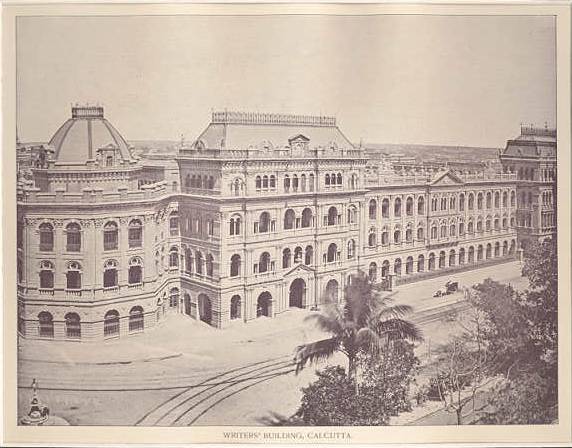
Writers' Building, 1890 (picture postcard). Then the Secretariat of the Imperial Government of India and today the secretariat of the Government of West Bengal. Notice the tram lines in front of the building.
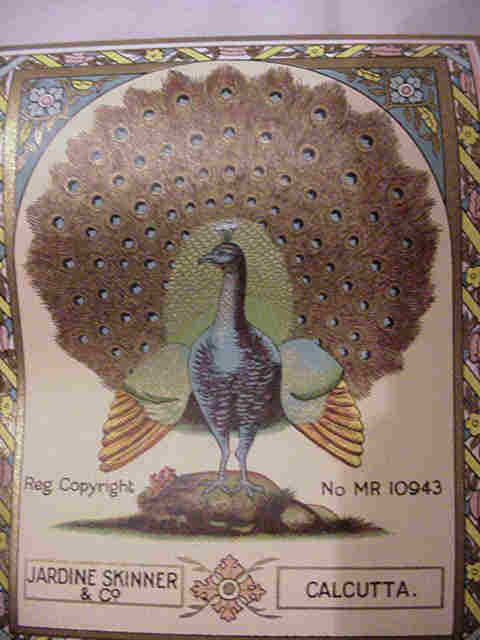
A label attributable to Jardine Skinner & Co. of Calcutta from 1890, one of the trading houses that prospered from the three way trade between London, Calcutta and Shanghai. Jardine Skinner today has disappeared from all three cities but continues to business in Hong Kong.
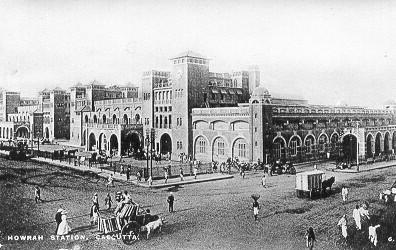
Howrah Station, 1905. Arguably one of the world's busiest railway stations, it handled then as now, all the traffic that went west from Calcutta. Situated across the river from the City of Calcutta, its link to the city has been via a bridge.
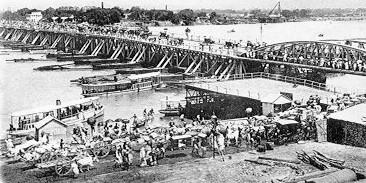
The old Howrah Bridge, from a photograph of 1905. This bridge was built in 1886 to replace the ferry service to the main railway station of Calcutta. This bridge had a retractable portion so as not to encumber maritime traffic. In 1942, this bridge was replaced by the cantilever Howrah Bridge that we know of today. The old bridge however continues to be in operation in the Kidderpore Docks.
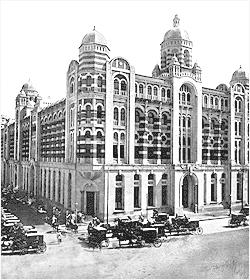
The Indian headquarters of the Chartered Bank of India, China & Australia Limited in 1940. Today this building serves as one of the principal offices of the Standard Chartered Bank p.l.c. in India.
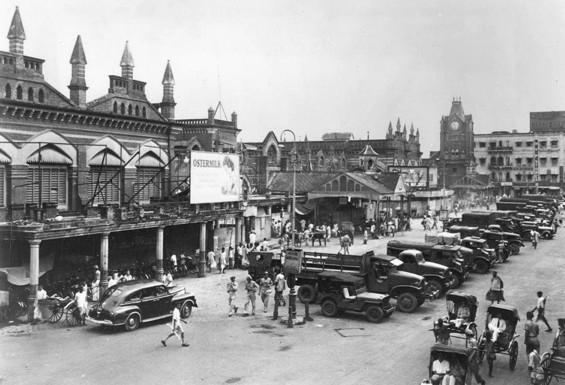
New Market, 1945. Officially built as the Sir Stuart Hogg Market in the 1880s but referred to this day as the New Market, this was one of the first shopping malls in the world. Legend goes that one could buy tiger's milk here at one time, New Market remains a major shopping center for residents and visitors alike.
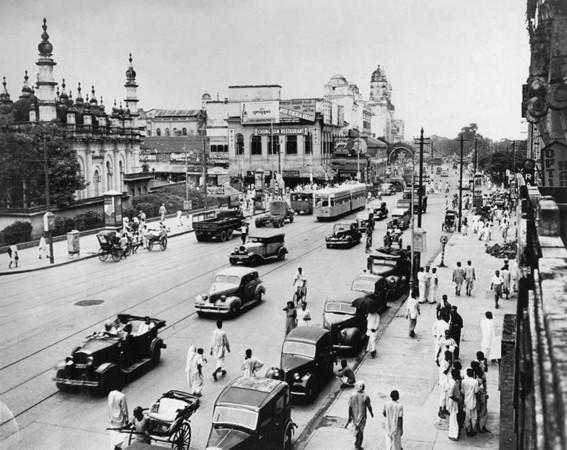
Chowringhee Road, 1940. One of the finest promenades in the world at the time. As part of the Allied Offensive in China in 1942-43, three make shift airstrips were built in Burma. They were nicknamed Broadway, Piccadilly and Chowringhee, which demonstrates the league that this promenade kept at the time.
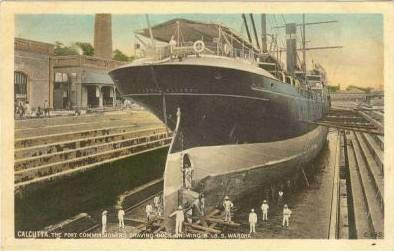
A picture postcard depicting British Indian Steam Navigation Company's S.S. Wardha berthed at the Kidderpore Docks. Until the beginning of the second world war, passenger and cargo ships of all prominent lines around the world connected Calcutta with ports ranging from New York, Buenos Aires, Liverpool, Venice, Sydney and Honolulu with regular passenger as well as freighter services. Much disruption happened during the war, and later the riverine port was found inadequate for larger ships and slowly went into decline, rather like the Tilbury Docks in London.
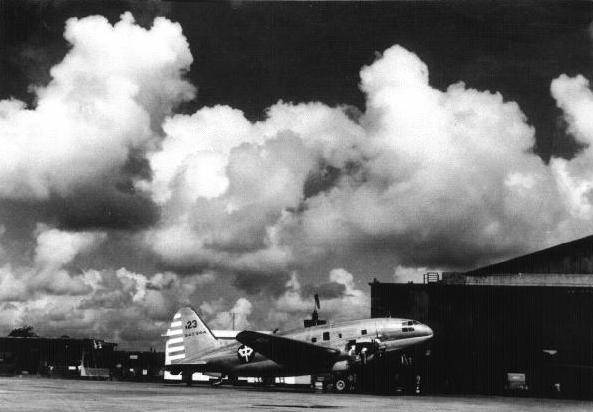
Dum Dum Aerodrome, 1944. Calcutta was an obvious destination for all airlines of the world. Calcutta appeared on KLM's Amsterdam-Batavia (now Jakarta) route in 1928, on Air Orient's (later renamed Air France) Paris-Saigon route in 1933 and Imperial Airways' London-Hong Kong/Singapore route in 1934. China National Aviation Company flew a Shanghai - Hong Kong - Chungking - Calcutta service in 1937. As a matter of fact, CNAC shifted its operational headquarters to Calcutta after Shanghai fell to the Japanese.
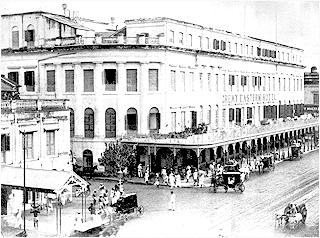
Great Eastern Hotel, from a 1915 photograph. Once regarded as the finest hostelry "east of the Suez", Great Eastern once boasted of the only clone of the famous Parisian restaurant Maxim's. The hotel has since gone into an abysmal decline but there is talk of handing it over to a French company and restoring it to its past glory.
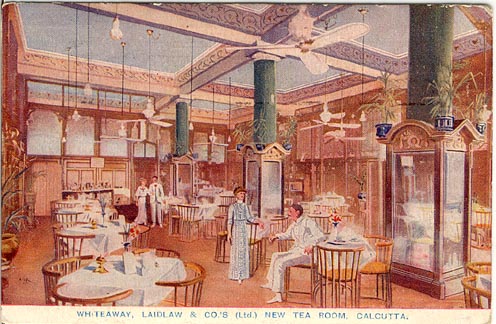
A picture postcard depicting the tea room of Whiteway, Laidlaw & Co., the famous Calcutta departmental store that once rivaled Harrod's, Macy's and Mitsukoshi.
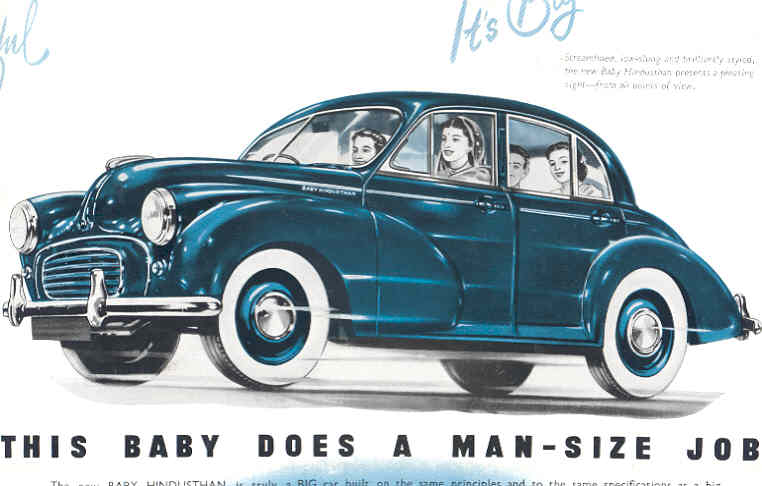
An advertisement of the 1953 Baby Hindusthan. Hindusthan Motors started manufacturing Morris automobiles at their factory near Calcutta in 1943. This factory, to this day, continues to manufacture the Ambassador, the classic Morris Oxford with a minor variations, the standard taxi cab in Calcutta.